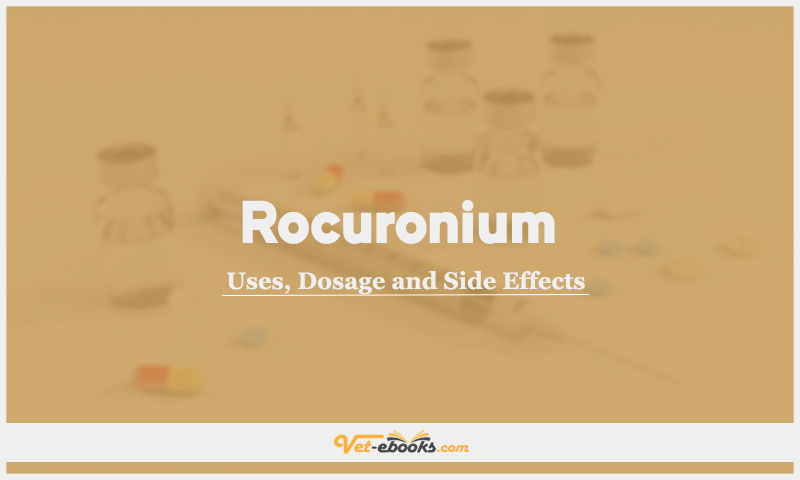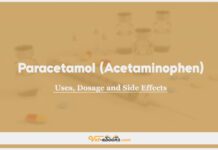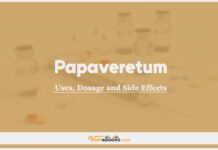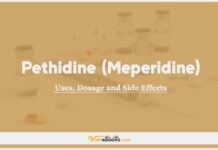Rocuronium In Dogs & Cats: Uses, Dosage and Side Effects

Overview
- Inhibits the actions of acetylcholine at the neuromuscular junction by binding competitively to the nicotinic acetylcholine receptor on the postjunctional membrane.
Uses of Rocuronium
- Provision of neuromuscular blockade during anaesthesia.
- Improve surgical access through muscle relaxation, facilitate positive pressure ventilation or intraocular surgery.
Dose of Rocuronium in Dogs and Cats
Dogs:
- 0.4 mg/kg i.v. followed, when required, by a maintenance dose of 0.16 mg/kg i.v. prn or continuous rate infusion of 0.2 mg/ kg/h.
- Considerably lower doses are required to centralize the globe for ophthalmic surgery (0.05–0.1 mg/kg i.v.).
Cats:
- Doses of 0.3–0.6 mg/kg i.v. have been evaluated in cats. 0.6 mg/kg had a rapid onset and short duration of action (20 min).
- Rocuronium has been evaluated to improve conditions for endotracheal intubation in cats at a dose of 0.6 mg/kg; however, this strategy requires prompt successful intubation and ventilation until the effects of the neuromuscular blockade wane (or the effects are reversed) and spontaneous respiration resumes.
Drug Dosage Calculator
You Should Give:
Side Effects of Rocuronium in Dogs and Cats
- Causes an increase in heart rate and a mild hypertension when used at high doses.
Contraindications of Rocuronium in Dogs and Cats
- Do not administer unless the animal is adequately anaesthetized and facilities to provide positive pressure ventilation are available.
Some Notes:
- Neuromuscular blockade is more prolonged when rocuronium is given in combination with volatile anaesthetics, aminoglycosides, clindamycin and lincomycin.
- Similarity to Vecuronium: Rocuronium is similar to vecuronium but has a more rapid onset of action and a shorter duration to spontaneous recovery in dogs.
- Convenience: It is available in an aqueous solution and has a longer shelf life, making it a convenient choice for anaesthesia.
- Monitoring and Reversal: It is recommended to monitor the neuromuscular blockade using a nerve stimulator and to reverse it to ensure complete recovery before the end of anaesthesia. Sugammadex can be used to rapidly reverse the neuromuscular blockade caused by rocuronium, typically at a dose of 8 mg/kg intravenously in dogs.
- Prolonged Action Factors: Several factors, including hypothermia, acidosis, and hypokalemia, can prolong the duration of action of neuromuscular blockade.
- Hepatic Disease: In cases of hepatic disease, the duration of action of rocuronium may be prolonged, and atracurium may be preferred in this group of patients.
- Renal Disease: The effects of renal disease on the duration of action of rocuronium require further investigation. An experimental study in cats suggested that recovery from rocuronium was independent of renal perfusion.
Tip
Do You Want To Increase Your Veterinary Knowledge and Practical Skills?
You Can Now Browse and Download +3000 Books For Veterinary Professionals & Students Online.
Download Veterinary Books




















